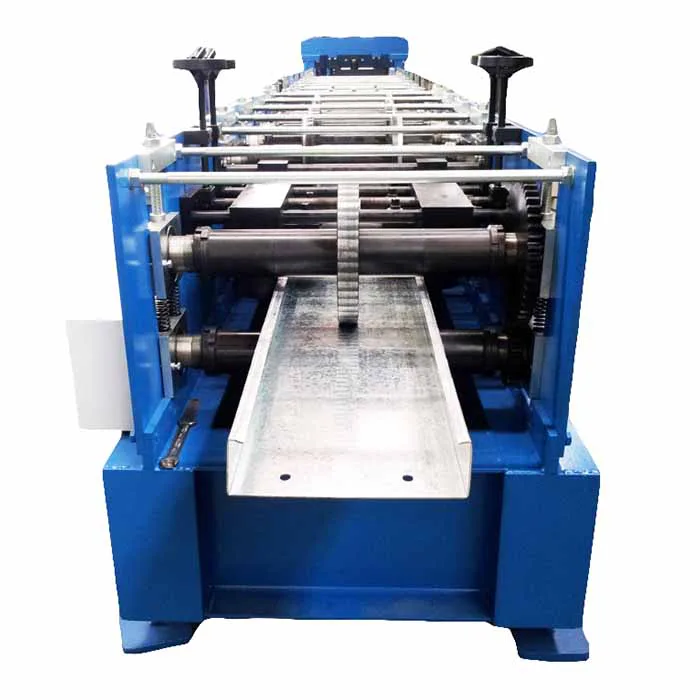
How to Customize Rectangular Duct Machines for Specialized Applications
- By:Metmac
- 2024-09-12
- 187
Rectangular duct machines are essential equipment for fabricating ducts used in heating, ventilation, and air conditioning (HVAC) systems. While standard rectangular duct machines can handle most ductwork applications, there are specialized applications that require customized machines. This article explores how to customize rectangular duct machines to meet specific requirements.
Understanding the Customization Process
Customizing rectangular duct machines involves modifying various aspects of the machine to suit the unique needs of the application. This process typically includes:
– Determining the desired output: Identifying the specific dimensions, shape, and material requirements of the ducts to be produced.
– Selecting suitable components: Choosing the appropriate size and type of frame, rolls, and cutting mechanisms to achieve the desired output.
– Configuring the machine parameters: Setting up the machine’s settings, including feed rate, bending radius, and cutting speed, to optimize production.
– Integrating additional features: Enhancing the machine’s functionality by adding features such as automatic loading, seam welding, or flange forming.
Customization Aspects
1. Frame and Rolls
The frame and rolls are the main structural components of a rectangular duct machine. Customizing involves selecting the appropriate frame size to accommodate the desired duct dimensions and choosing rolls with the correct diameter and pitch for the required bend radius.
2. Cutting Mechanisms
Rectangular duct machines use either shear blades or rotary blades for cutting the metal sheet. Customizing includes selecting the appropriate cutting mechanism based on the material and thickness of the sheet being processed. Shear blades offer a clean cut but require more force, while rotary blades provide a faster cut with less force.
3. Feed Rate and Bending Radius
The feed rate determines the speed at which the sheet is fed into the machine, while the bending radius controls the angle of the bend. Customizing involves adjusting these parameters based on the desired duct geometry and sheet thickness. A higher feed rate can increase production speed, while a smaller bending radius results in sharper bends.
4. Additional Features
To cater to specialized applications, rectangular duct machines can be customized with additional features. These features enhance functionality and efficiency, such as:
– Automatic loading: Eliminates manual sheet handling and increases production speed.
– Seam welding: Provides a strong and airtight joint between the duct sections.
– Flange forming: Automatically creates flanges on the duct edges, facilitating connection to other duct components.
Customizing rectangular duct machines for specialized applications requires a thorough understanding of the process and the specific requirements of the application. By carefully selecting components, configuring parameters, and integrating additional features, it is possible to optimize the machine’s performance and meet the unique demands of different HVAC projects.
-
Metal Sheet Forming Machine: The Engine of Modern Fabrication and the METMAC Standard
2025/12/30 -
Laser Cutting Machine for Steel Plate: Precision Redefined for Modern Fabrication
2025/12/30 -
Metal Curving Machine: Shaping Strength with Precision and the Art of METMAC Engineering
2025/12/30 -
Shear Metal Cutting Machine: Precision, Power, and the METMAC Standard
2025/12/30
-
Advanced Sheet Metal Rolling, Laser Cutting, and Folding Machines for Precision Fabrication
2025/10/31 -
High-Performance Sheet Metal Bending and Cutting Machines for Modern Fabrication
2025/10/31 -
High-Quality Sheet Metal Equipment for Sale: Efficient Solutions for Modern Manufacturing
2025/10/31 -
High-Performance Sheet Metal Equipment for Sale: Forming and Shearing Solutions for Modern Fabrication
2025/10/22
-
A Guide to the Latest Innovations in Sheet Metal Folding Machines
2024/11/29 -
Key Features to Consider When Investing in a Sheet Metal Folding Machine
2024/11/28 -
Enhancing Precision with Advanced Sheet Metal Folding Machines
2024/11/27 -
How to Choose the Right Sheet Metal Folding Machine for Your Workshop
2024/11/26







